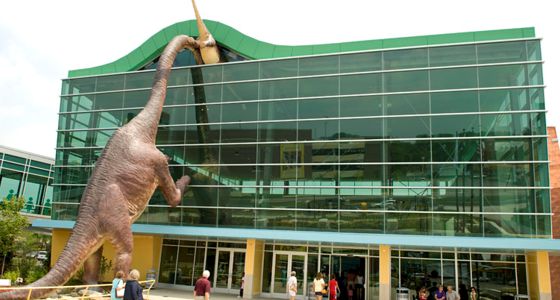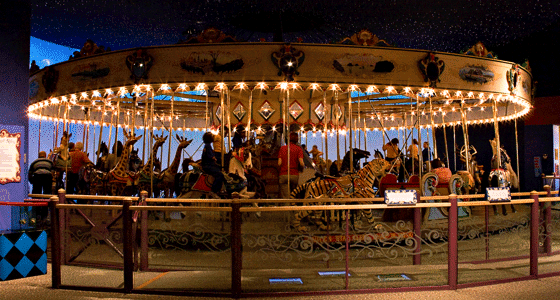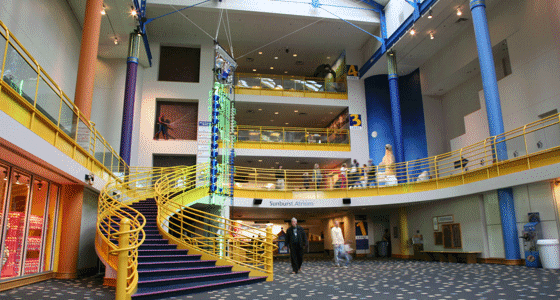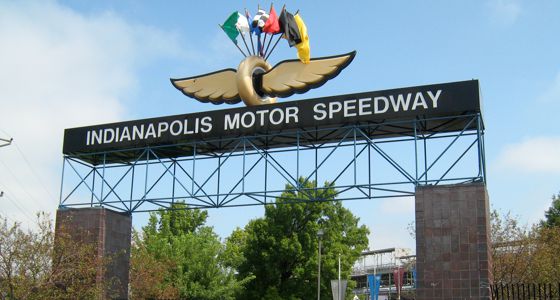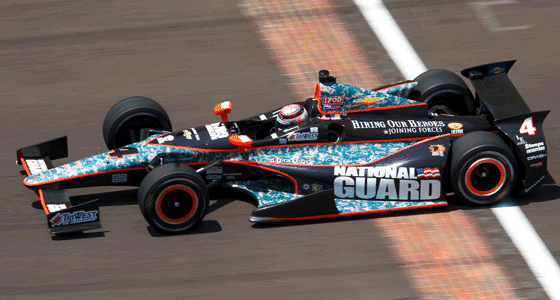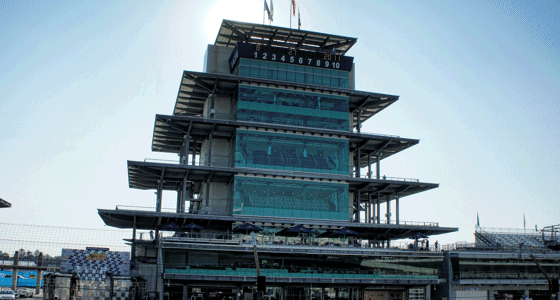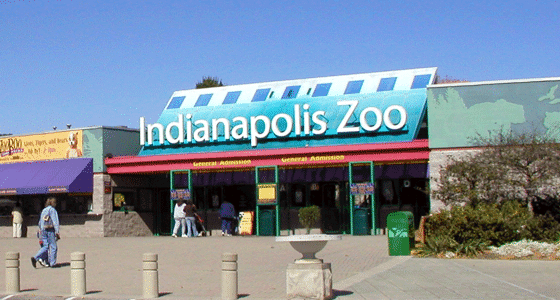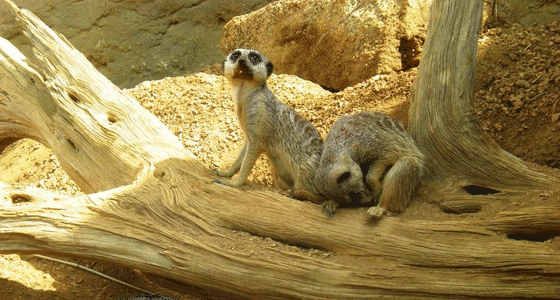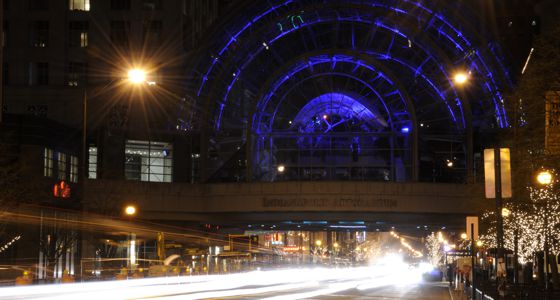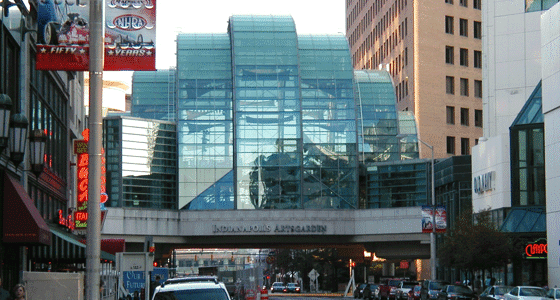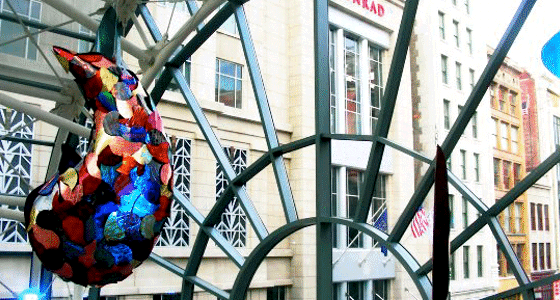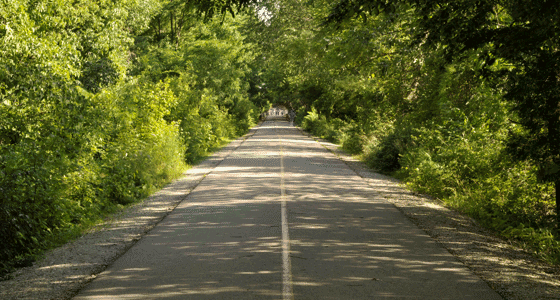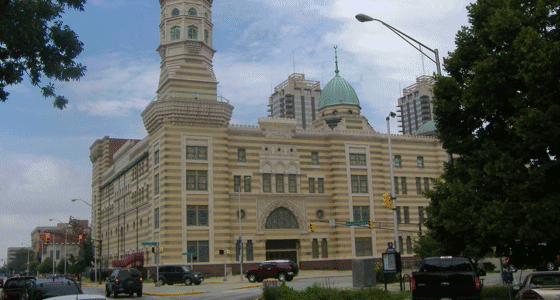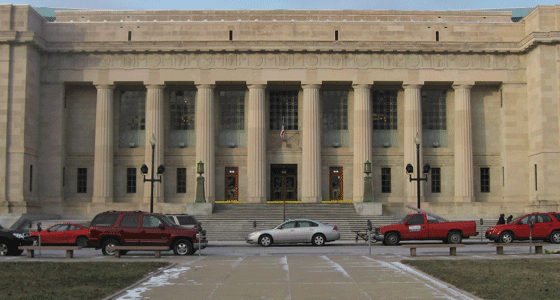|
||||||||||
|
|
|||||||||
|
The world's largest children's museum, The Children's Museum of Indianapolis, was inspired by a visit to the Brooklyn Children's Museum by Mary Stewart Carey. After visiting the Brooklyn museum, she enlisted help from Indianapolis civic leaders and neighborhood kids to open the original museum in the Old Northside area of Indianapolis. A board of trustees, The Children's Museum Guild, managed the museum as it expanded and moved a number of times and finally resting at its current location on Meridian Street. Some of the exhibitions include the "Dinosphere: Now You're In Their Word," artist Dale Chihuly's "Fireworks of Glass," SpaceQuest Planetarium, the world's largest clock, and Anne Frank Peace Park. In the Dinosphere, children interact in a simulated environment to study dinosaurs by collecting data and performing tests. "Fireworks of Glass" is a 43 foot tower sculpture and includes over 3,200 individual pieces. Ramps were installed so visitors can view the sculpture from top to bottom. Children are able to create their own versions of the sculpture and learn more about glass blowing. The museum also features numerous traveling exhibits at any given time and schedules live theater shows at the Lilly Theater. |
||||||||||
|
||||||||||
|
|
|
|||||||||
|
The Indianapolis Motor Speedway, located northwest of the downtown area, annually hosts the Indianapolis 500 Mile Race, Brickyard 400 and the Red Bull Indianapolis GP. While they aren't watching the races, visitors can experience the track in an IZOD IndyCar Series car with the capability to go up to 180 mph, with an experienced driver, of course. The Red Bull Indianapolis GP road course is available for group track laps for those who'd like to do a little racing with each other. The Indianapolis Motor Speedway Hall of Fame Museum is located in the same area and has been designated a National Historic Landmark. It was originally located where the Speedway's Administration Building is currently when it was established in 1956 by Tony Hulman and Karl Kizer. The modern museum found in the Speedway oval was built in 1975 and featured 30,000 square feet of display space. Natural light is provided by the glass canopy above the display floor. Among the cars displayed are 30 Indianapolis 500 winning cars, a 1954/55 Mercedes-Benz Formula One car and one of only three 1935 Duesenberg Model JN four-door convertible passenger cars. The Marmon "Wasp," which was featured in the U.S. Postal Service's Transportation Series postage stamps, is also on display. The Yard of Bricks is a peek of the first proper race surface on the track. Brick had been laid in 1909 to replace the poor condition of the original track. Over the years the brick had been patched and tarred and paved until its final resurfacing that left intact only the one-yard strip located at the start/finish line. NASCAR champion Dale Jarrett started the tradition of "kissing the bricks" to pay tribute to the ground's history after his Brickyard 400 win in 1996. Other places on the grounds include the Pagoda that houses race control and radio broadcasting; Gasoline Alley where visitors can, for a fee, see the drivers and mechanics; and the Brickyard Crossing Golf Course. |
||||||||||
|
||||||||||
|
|
|||||||||
|
The Indianapolis Zoo was started as an idea introduced by newspaper columnist Lowell B. Nussbaum, who wrote a series of articles in his column that described and advocated the idea of introducing a zoo into Indianapolis. In 1944, a movement began the planning stages of implementing the idea of a zoo. This plan culminated in the opening of the zoo in 1964. The zoo started as a small children's zoo, but over the next year, it expanded to be one of the few in the United States that had full-time education staff employed. Eventually, it was determined that the continued expansion of the zoo would only be made possible by moving it to another part of the city. International zoo, aquarium, and wildlife experts convened in Indianapolis in 1982 to establish new guidelines for the bigger, more improved zoo. Their discussion concluded that it should not simply be a place to view animals, but a way to educate the public about wildlife and the importance of protecting wildlife as a means of maintaining the Earth's ecosystem. The old zoo was closed in 1987 and was reopened at its downtown location in the Canal & White River State Park. The grounds contain a zoo, aquarium and botanical garden, making this site to be the first in the nation to be accredited as all three. The Indianapolis Zoo includes five bio domes of Encounters, Forests, Oceans, Deserts, and Plains where breeding and conversation techniques are practiced. To accomplish its education mission, it offers summer camps, overnight stays, behind-the-scene tours, shark touching pools, and bird feedings. The zoo also offers activities such as in-water dolphin interactions, animal created painting sessions, bathing elephants, dolphin training programs, and family sleepovers. When you're not at the zoo, you can check in on the animals on the live web cam feeds provided by the zoo. |
||||||||||
|
||||||||||
|
|
|
|||||||||
|
After Indianapolis formed the Arts Council of Indianapolis in the late 1980s at the urging of Mayor Bill Hudnut, it had opened the Indianapolis Artsgarden by the next decade. The Artsgarden is a suspended glass building, hovering over Illinois and Washington Streets in the downtown area, connecting to the Embassy Suites complex, the Conrad Hotel and Circle Centre Mall. It provides more than 300 free live performances and monthly free exhibitions to the community. The Artsgarden Cultural Concierge is also housed there and provides reservation services, directions, maps, calendars, visitor guides, and current exhibition information. It has since become an important asset to the artists and arts organizations by providing programs and services that aid in shaping the cultural scene of Indianapolis. Other activities by the Arts Council of Indianapolis are the opening of Gallery 924 that provides gallery space for solo exhibitions and a public art program that brings art outside to interact with the community. |
||||||||||
|
|||||||||||
|
|
||||||||||
|
The Indianapolis Cultural Trail, a paved bike trail and walking path located in the downtown Indianapolis area, is the collaborative project between Central Indiana Community Foundation, the City of Indianapolis and several non-profit organizations. Its approximately 8-mile trail allows users to pass through 5 of the 6 Indianapolis Cultural Districts, as well as access to the Monon Trail, which connects to the Broad Ripple Cultural District. Some of the sites on the Cultural Trail are the Old National Centre (a.k.a. the Murat Shrine), the Marion County Public Library, and the Indianapolis State Museum. The trail was intended to be a location for public art and has received up to $2 million in private funding for this purpose. Currently, the most well-known work is the Glick Peace Walk. It contains a dozen sculptural gardens known as the "luminary gardens." Each one is dedicated to an inspiring person in American history and describes their struggles over adversity to dedicate their lives to the betterment of the United States and the world. Along with the Glick Peace Walk, there are a number of public art pieces that are placed on the cultural trail, all of them the embodiment of the principles that the trail was designed for: Focus on quality over quantity Site sensitivity Engage both experienced and emergent artists Support innovation Promote Connectivity Some of the other public art installation that has been displayed is Julian Opie's "Ann Dancing," four light emitting display panels in the Mass Ave. Cultural District; Sean Derry's "Chatham Passage," consisting of a concrete vault, steel grate, LED lights and a scent machine also installed in Mass Ave.; and Acconci Studio's "Swarm Street," a series of embedded LED lights hooked up to motion sensor equipment made the lights react to those passing by. |
|||||||||||

|
||||
| Home | History | Attractions | Food | Lodging | Sources | ||||
|
||||

